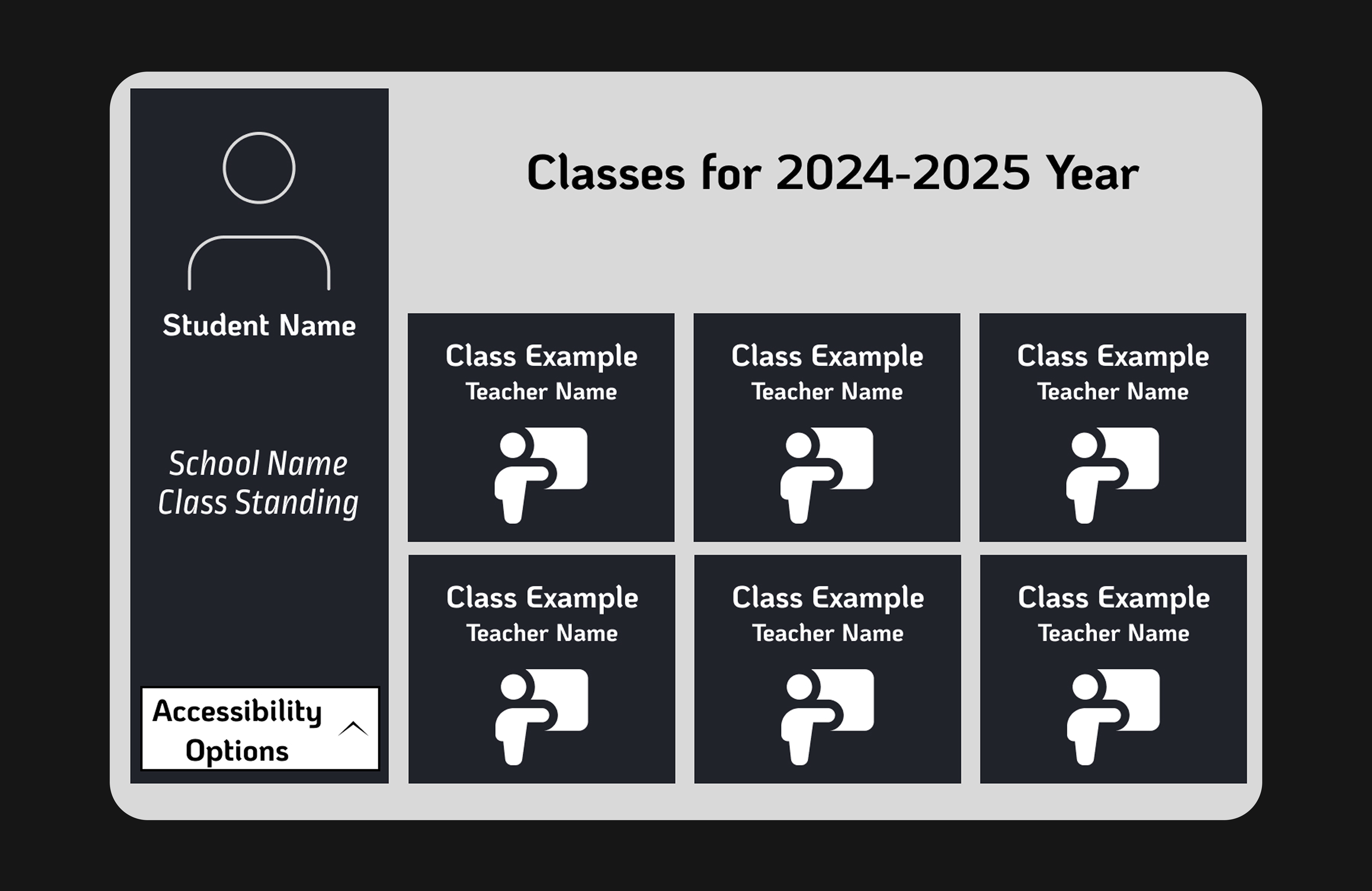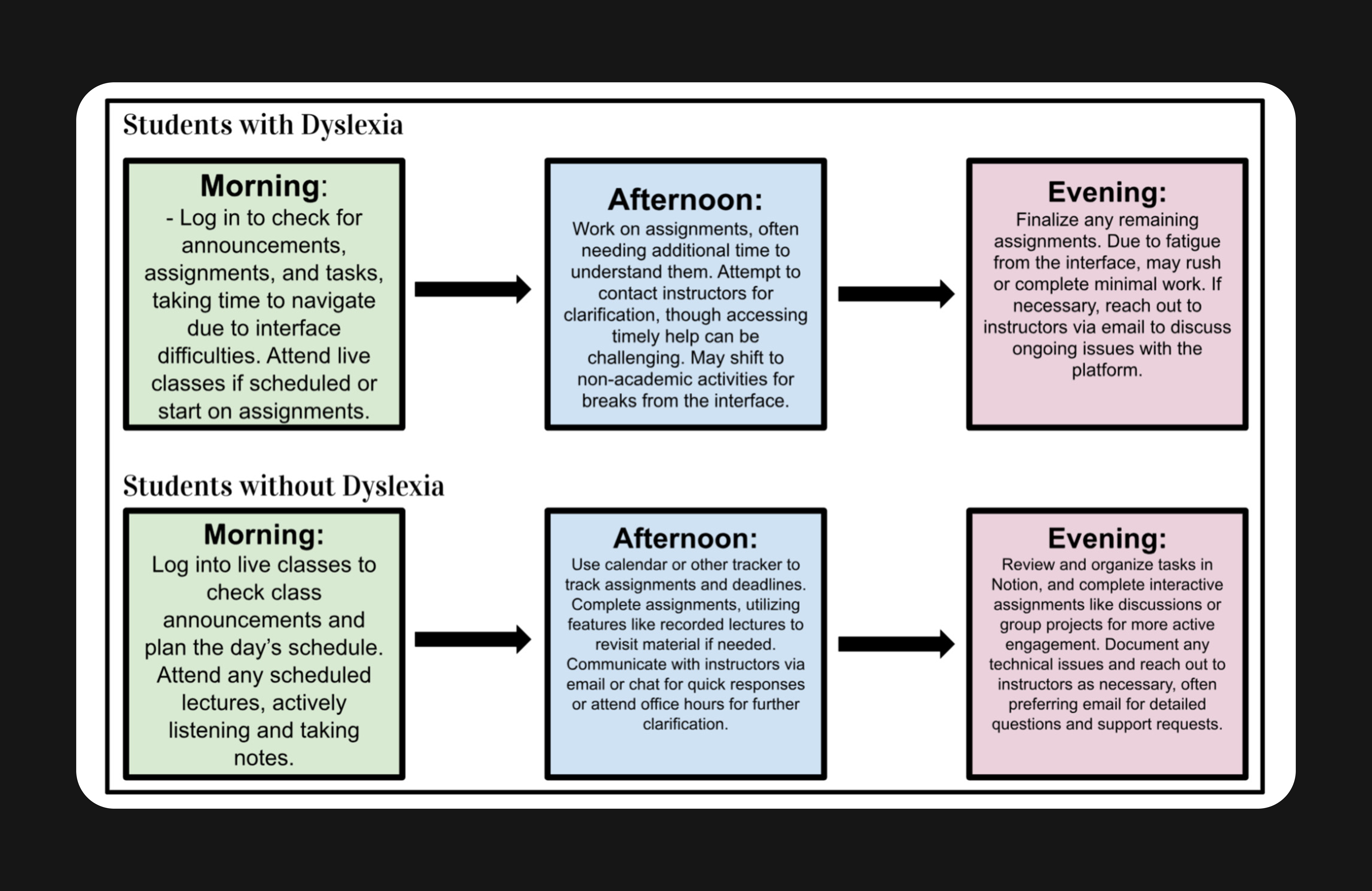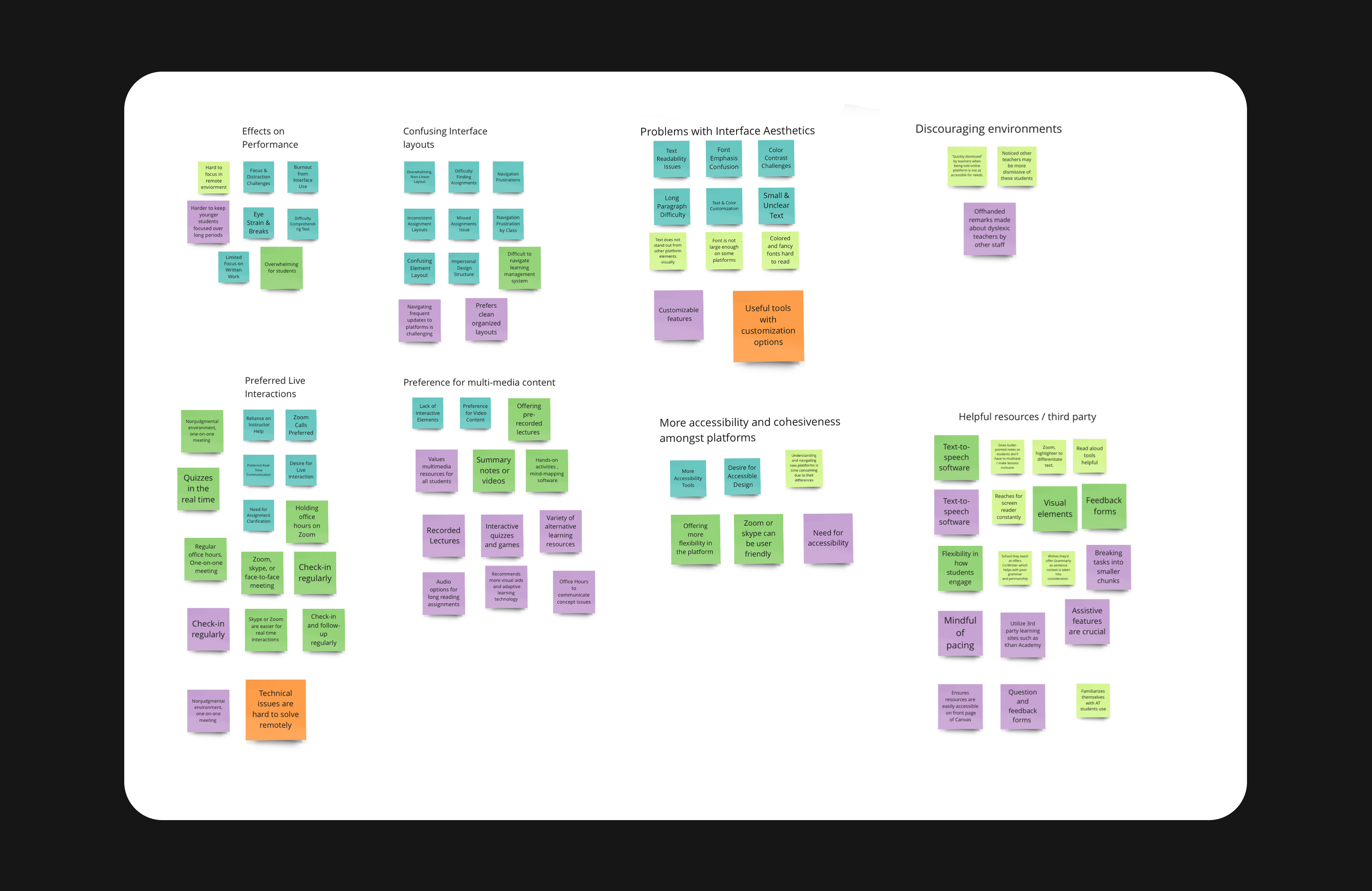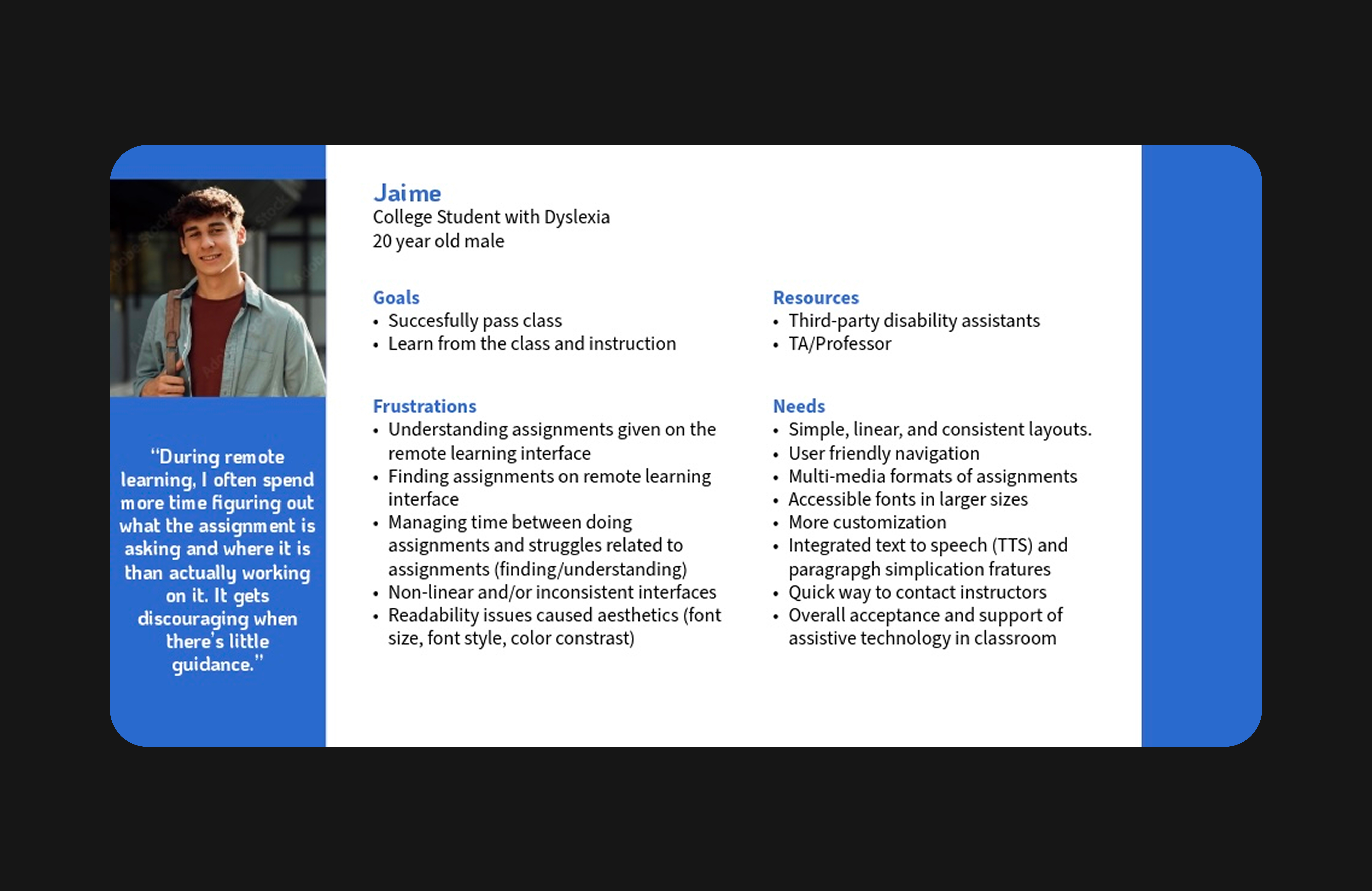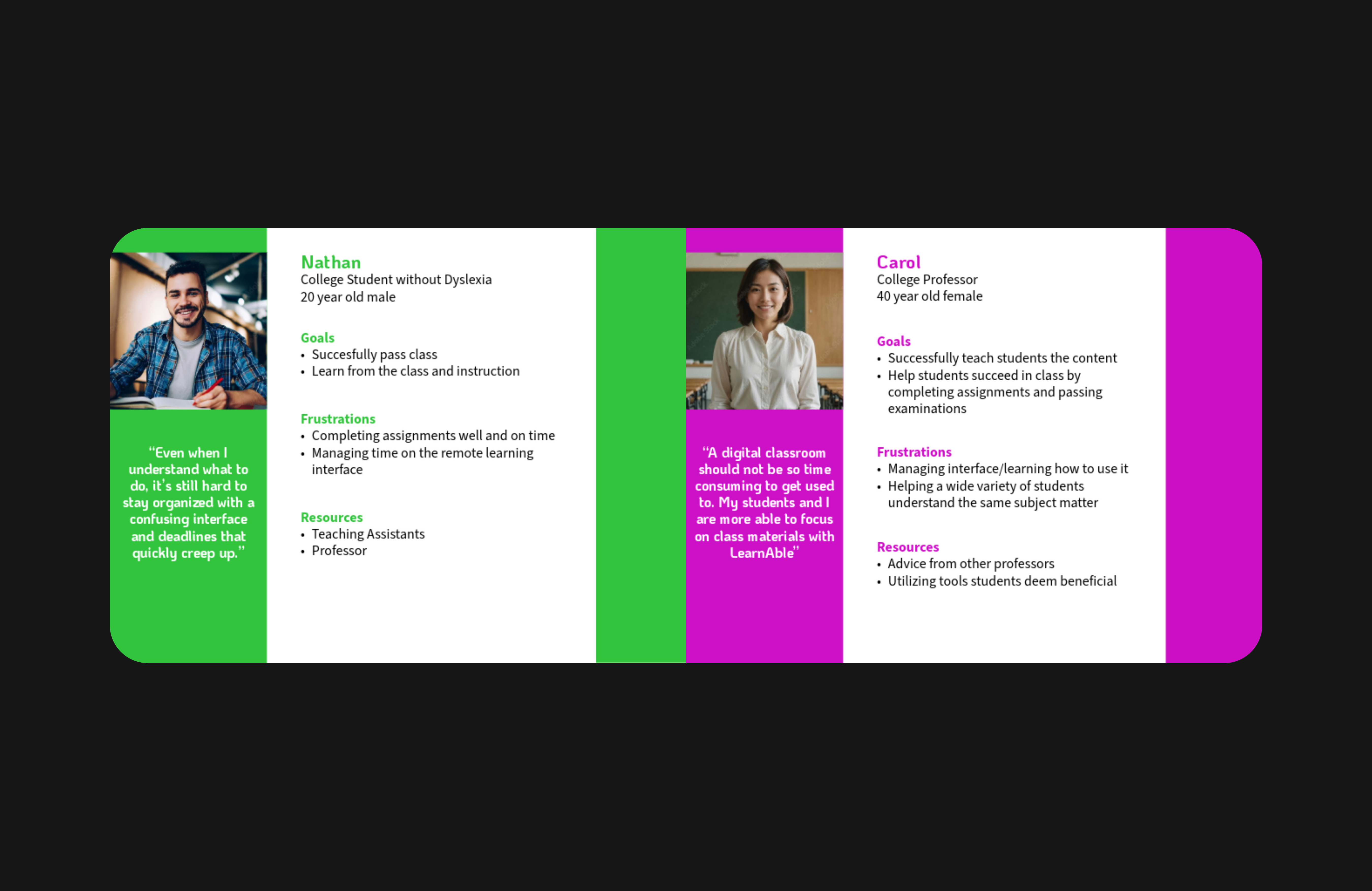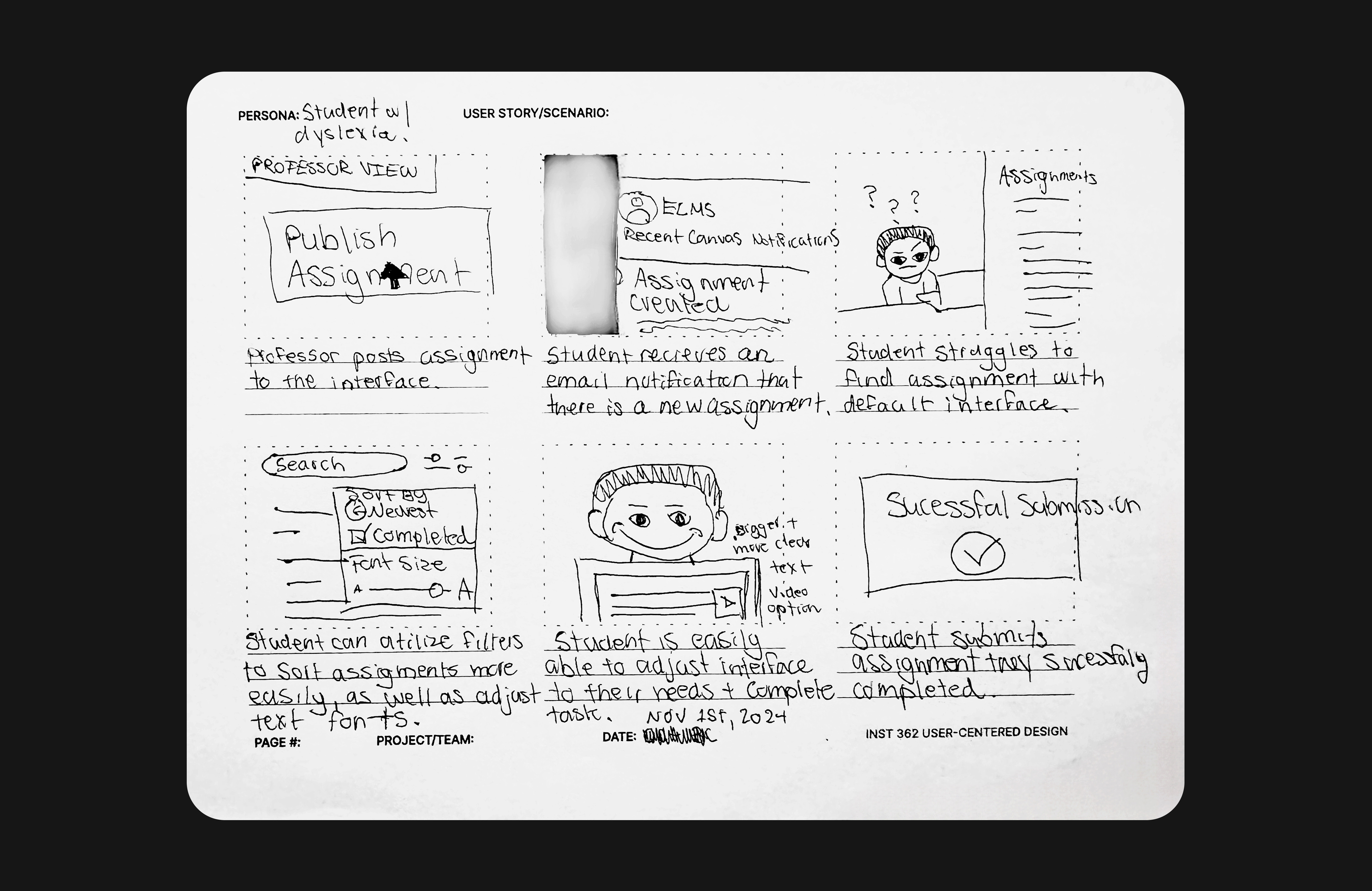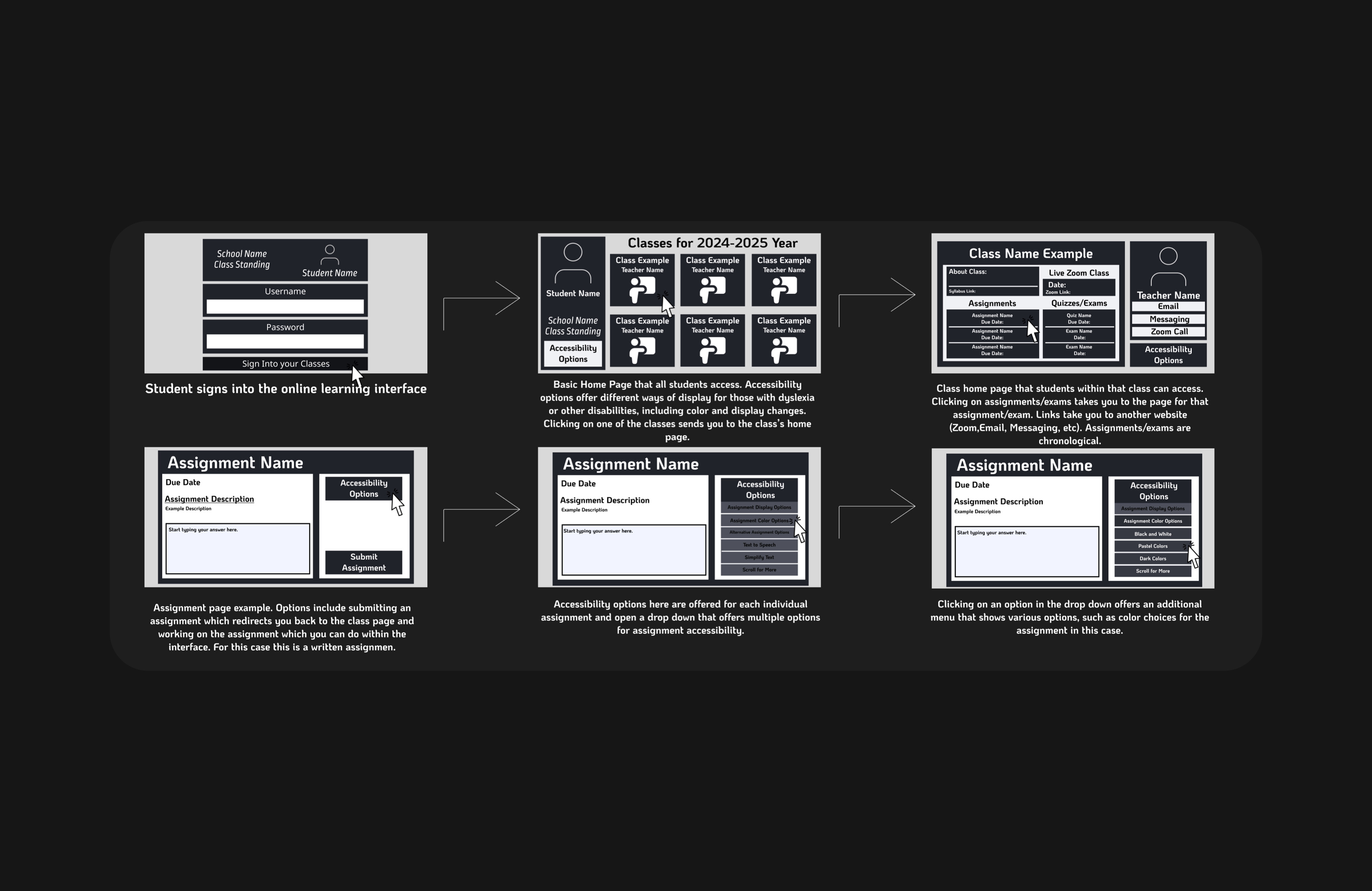Key Results
Framed as a "digital library," the interface presents information in a logical structure that encourages exploration and supports an inclusive learning atmosphere. The design embraces an ecological perspective, recognizing that students' learning experiences are shaped by their broader digital environment.
Features such as simplified layouts, dyslexia-friendly fonts, embedded assistive technologies, multimedia content, and built-in instructor contact options were incorporated into the final iteration. It was consistently rated as clean, visually organized, and easy to navigate. All users found the layout intuitive and uncluttered, enabling efficient task completion.There were no issues locating assignments, information about instructors, AT tools, or settings to change the interface.
Adaptive layouts allowed for font and contrast adjustments, where some users reported difficulties with font type and spacing in longer texts. This highlights the need for further development in readability options.
Despite strong usability ratings, individual experiences varied slightly, emphasizing the importance of adaptable design that can accommodate a range of individual needs.
